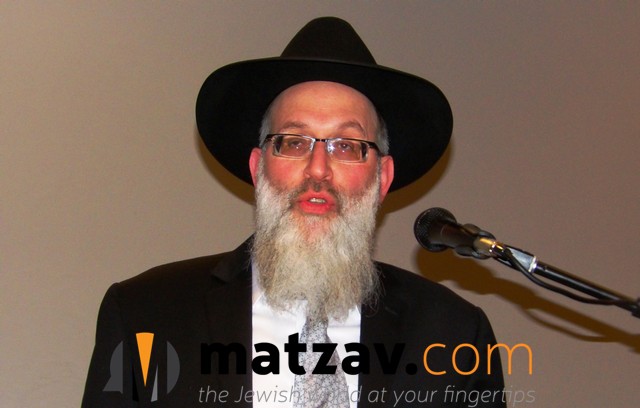
By Rabbi Dovid Heber
This Sunday night when Rosh Hashanah 5777 begins, it will not only be the beginning of a new year but will also be the first year of the 305th 19-year cycle since brias ha’olam, as indicated in the luach of the Tur in Orach Chaim siman 428. 5776 was the 19th and final year of the previous 19-year cycle which began on Rosh Hashana 5758/1997 and 5777 (2016-2017) is the first year of the new cycle.
Unlike the solar cycle of 28 years (Machzor Gadol) which is used in the Jewish calendar to calculate tkufos (seasons) and begins with the recitation of Birchas Hachama, the new 19-year cycle (Machzor Katan) will begin almost unnoticed. Indeed, we will experience Rosh Hashana night – one of the most beautiful nights of the year. But, as the sun sets and it gets dark on Sunday and we transition from the end of one cycle into the beginning of a new cycle – there will be nothing special to mark the beginning of this new machzor.
What is this cycle and why is it necessary? The 19-year cycle consists of 12 regular years and 7 leap years (Years #3, 6, 8, 11, 14, 17 and 19 of the cycle). So, 12 years of 12 months plus 7 years of 13 months equals 235 months in the 19-year cycle. 5776 was a leap year with two Adars because it was the 19th year of the cycle. The next leap year will be 5779, the third year of the cycle, with two months of Adar in 2019.
As is well known Pesach must occur B’chodesh Ha’aviv – in the spring. Using just a lunar calendar, this is impossible for the following reason: There are approximately 29.5 days between one new moon and the next, so 12 lunar months add up to about 354 days. The earth takes just under 365.25 days to go around the sun, forming the basis of the solar calendar and seasons. A strictly lunar calendar is about 11 days shorter than the solar year. Without a leap year, eventually, Pesach would drift into the winter and not fulfill the Torah’s requirement of “B’chodesh Ha’aviv.” This cannot happen. The solution is a leap year – seven times every 19 years an extra Adar is added to push the Hebrew dates ahead thereby insuring Pesach remains in Aviv/spring.
The simple math is that 19 solar years (365.25 days x 19, the amount of time it takes the earth to go around the sun 19 times) takes between 6939 and 6940 days. With seven leap years (shana me’uberes) in 19 years there are 235 months. Since the time between each new moon (the basis for each month in the Hebrew calendar) is 29 days 12 hours 44 minutes and 1 chalek (i.e. 3.33 seconds), 235 rotations take between 6939 and 6940 days – about the same as 19 solar years! [The exact amount of time between 6939 and 6940 for both cycles and why some cycles are longer than 6940 days are beyond the scope of our discussion.]
During the 19-year cycle, there can be 6939, 6940 or 6941 days. It is interesting to note that the 19-year cycle we are about to complete is 6941 days long – the last cycle that was so long concluded with Rosh Hashana 5682 (1921). [In theory, it is possible for a cycle to be 6942 days, but this has not occurred since Hillel Hasheini established the calendar in 4119/359 C.E.].
This issue relates to something very well known. In general, one’s 19th Hebrew and English birthdays coincide. This is because the number of days of both the lunar and solar years are about the same, so the two birthdays occur on the same day. However, this does not always happen. The same applies to birthdays that are multiples of 19. The 38th, 57th, 76th, 95th, and 114th birthdays have English and Hebrew days which usually coincide but sometimes do not. It should be noted that one’s 19th birthday will never occur on the same day of the week that he was born (even if the Hebrew and English dates coincide).
The following will illustrate why it is impossible to always work. Purim 5724 occurred on February 27, 1964. 19 years later, Purim 5743 also occurred on February 27, 1983. In both years, Shushan Purim (15 Adar) occurred on February 28. The next day in 1964 was 16 Adar and February 29th. The following day was 17 Adar and March 1. However, 1983 was not a civil leap year, so there was no February 29th and the dates were therefore “out of sync,” as 16 Adar was not February 29 (it did not exist), but rather March 1. 17 Adar was March 2, 1983. So, those born on March 1, 1964, or on any day in 1964 after this day, did not have their Hebrew and English 19th birthday on the same day. When the Hebrew and English correlation becomes “out of sync,” it takes another additional or subtracted day to rectify the situation (e.g., 30 Marcheshvan or Kislev or a February 29th in one year and not 19 years later or vice versa).
Indeed the Machzor Katan/19-year cycle plays a very important role “behind the scenes” with regard to when Yomim tovim occur and numerous other occasions in the life of a Yid. Understanding it gives us a better appreciation of the Torah Hakdosha and Chazal. May this 19-year cycle bring much brocha v’hatzlacha to us, our mishpochos and gantz Klal Yisroel and may we merit to see the ultimate geula during this upcoming Machzor Katan. Ksiva vachasima tova.
Rabbi Dovid Heber is the Rav of Khal Ahavas Yisroel Tzemach Tzedek in Baltimore and a Kashrus Administrator at Star-K Kosher Certification
{Matzav.com}












Thank u 4 sharing, truly interesting !!